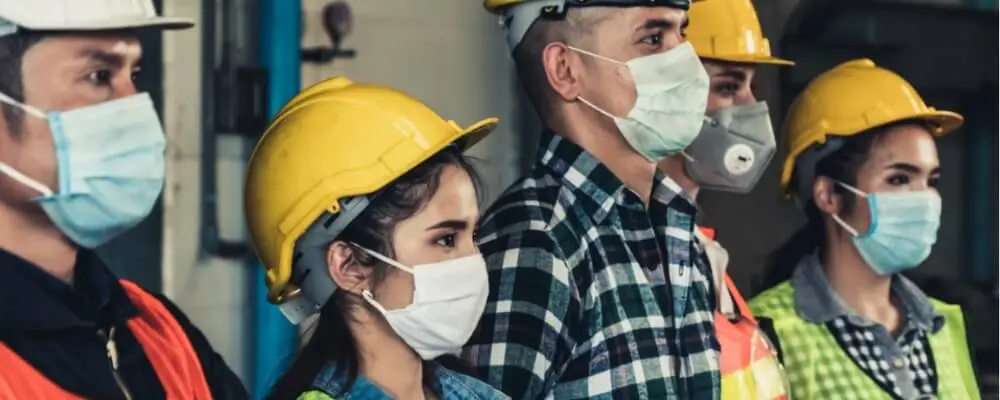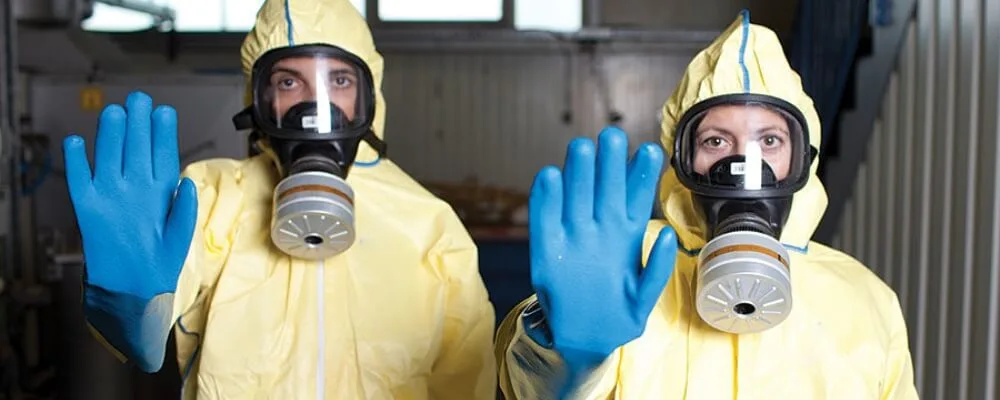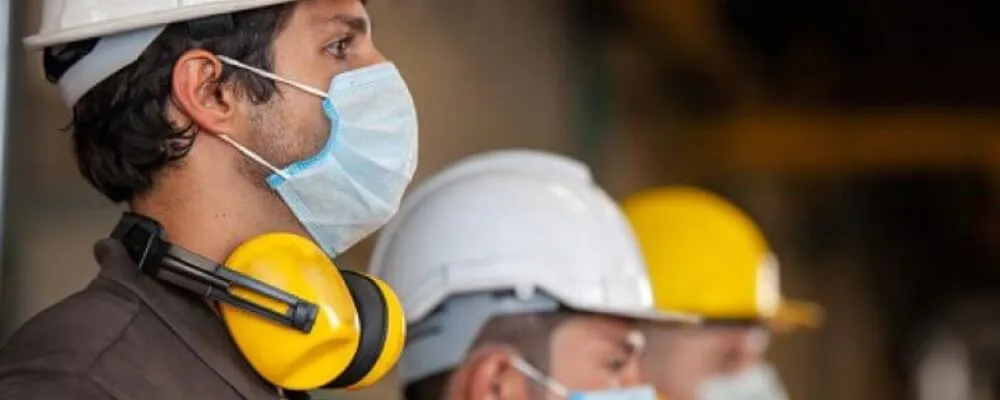Navigating the complexities of workplace safety can often seem daunting, especially when understanding the myriad of terms, regulations, and standards that ensure a healthy environment for employees. One crucial concept often emerging in occupational health discussions is Permissible Exposure Limits or PELs. But what are PELs, and why are they so pivotal? Welcome to our ultimate guide on Permissible Exposure Limits.
This comprehensive resource aims to shed light on the science, regulations, monitoring methods, and implications of PELs, ensuring that employers, workers, and industry professionals have a deep and holistic understanding of their significance. Whether you’re a business owner striving for a safer workspace, an employee curious about your rights, or someone eager to learn, this guide is your one-stop destination to demystify PELs. Dive in and explore how we set the standards for a safer working world.
Permissible Exposure Limits (PELs)
Permissible Exposure Limits (PELs) refer to the maximum amount or concentration of a chemical substance or physical agent (like noise) that a worker can be exposed to under OSHA regulations. These limits are set to protect workers from the health effects of exposure to hazardous substances and agents during their work.
- Permissible: This indicates that the limit set is allowable under regulatory standards. It’s the maximum level of exposure that won’t result in adverse health effects for most workers.
- Exposure: Refers to the contact a worker has with a hazardous substance or agent. This could be through inhalation (breathing it in), dermal contact (skin exposure), or ingestion (swallowing).
- Limit: The maximum amount or concentration of the hazardous substance or agent to which a worker can be exposed. It’s usually defined for a specific period, like an 8-hour workday (time-weighted average) or 15 minutes (short-term exposure limit).
PELs are established based on scientific evidence and research into the health effects of various substances and agents. The goal is to ensure that workers aren’t exposed to levels that can harm them immediately or over a long period.
It’s worth noting that while PELs offer a guideline, some critics argue that they may not always be stringent enough or up-to-date with the latest research. As such, some organizations might follow more conservative limits, such as those recommended by NIOSH.

The Science Behind Permissible Exposure Limits (PELs)
PELs are rooted in scientific research that delves into the levels at which substances or physical agents can harm humans. This involves a comprehensive understanding of both immediate and long-term physiological impacts of exposure and the distinction between acute and chronic effects.
Physiological Effects of Exposure
Every substance or agent has its unique interaction with the human body. Chemical substances can interfere with body processes, cause tissue damage, or even modify DNA. For instance, solvents might affect the central nervous system, asbestos is known to lead to lung diseases, and heavy metals like lead can hamper neurological functions.
On the other hand, physical agents such as radiation, vibration, or noise have their sets of impacts. Prolonged noise exposure can damage the inner ear, leading to hearing loss, and ionizing radiation can negatively affect body tissues and DNA.
Short-term vs. Long-term Exposure
Short-term exposure refers to high-level exposures over a brief duration. The impacts can be immediate reactions such as dizziness, skin irritation, or severe toxicity. This type of exposure is often governed by Short-term Exposure Limits (STELs) which focus on the peak levels of exposure permissible at any point during a workday.
Conversely, long-term exposure relates to exposures spread over extended periods, often spanning years. The impacts of such exposures can be chronic health issues like organ damage or even cancer. Time-weighted Average (TWA) limits are usually set for these, which look at the average exposure over a workday or workweek, ensuring no harm from prolonged exposure.
Acute vs. Chronic Effects
Acute effects are the immediate health outcomes that arise post-exposure. They develop rapidly, ranging from chemical burns due to acid exposure, respiratory difficulties from inhaling a toxic substance, or even sickness from significant radiation doses.
Chronic effects, on the other hand, arise from sustained exposure over longer durations. These effects might not be evident immediately but can lead to conditions like asbestosis from prolonged asbestos exposure, chronic bronchitis from enduring exposure to certain dust or chemicals, or even cancers that might manifest years after exposure to a carcinogenic agent.
The science behind PELs aims to grasp the diverse physiological impacts of substances and agents, whether they present immediate threats or long-term health risks. By differentiating between acute and chronic effects, PELs safeguard workers, ensuring their health and safety in the workplace.

How PELs are Determined
Determining Permissible Exposure Limits (PELs) is a rigorous process that requires a multidisciplinary approach. Various factors come into play, from scientific research to considering vulnerable groups.
The Role of Scientific Research and Clinical Studies
PELs heavily rely on data from scientific research and clinical studies. These studies investigate substances’ toxicological properties, determining their acute and chronic effects on human health. They might involve in-vitro testing, animal studies, or, in some cases, controlled human exposures. Over time, as more research becomes available, PELs can be updated to reflect the latest scientific understanding.
Risk Assessment Methodologies
To set PELs, a comprehensive risk assessment is often employed. This process generally involves:
- Hazard Identification: Determining if a substance can pose a health risk.
- Dose-Response Assessment: Understanding the relationship between the amount of exposure and the severity of its adverse effects.
- Exposure Assessment: Evaluating the extent and frequency of exposure workers will likely encounter.
- Risk Characterization: Integrating the above steps to estimate the potential health risks associated with different levels of exposure.
Consideration of Vulnerable Populations
When determining PELs, it’s essential to consider vulnerable populations, such as pregnant women, older workers, or those with pre-existing health conditions. These groups might be more susceptible to certain exposures, requiring more stringent limits or additional protective measures. The aim is to ensure that PELs protect all workers, not just the average person.
The Role of International Bodies and Comparisons of PELs Across Countries
International organizations, such as the World Health Organization (WHO) or the International Labour Organization (ILO), often provide guidelines or recommendations for exposure limits. These global standards can influence national regulations, promoting consistency and best practices across countries.
However, PELs can vary from one country to another based on local conditions, economic factors, technological capabilities, and even cultural perceptions of risk. Comparing PELs across nations can offer insights into different approaches and lead to a more harmonized understanding of exposure limits.

PELs Across Different Agents
PELs are applied to various agents in occupational settings, covering chemical, biological, and physical exposures. Here’s a breakdown of the three categories, with some specific common agents and their respective PELs as of my knowledge cut-off date in September 2021.
Chemical Agents
Chemical agents include a wide range of substances that might be present in the workplace, from solvents and metals to gases.
Solvents:
- Benzene: OSHA’s PEL is 1 part per million (ppm) for an 8-hour TWA.
- Toluene: OSHA’s PEL is 200 ppm for an 8-hour TWA.
Metals:
- Lead: OSHA’s PEL is 50 micrograms per cubic meter (µg/m³) over an 8-hour TWA.
- Mercury: OSHA’s PEL is 0.1 mg/m³ as an 8-hour TWA.
Gases:
- Carbon Monoxide: OSHA’s PEL is 50 ppm over an 8-hour TWA.
- Ammonia: OSHA’s PEL is 50 ppm for an 8-hour TWA.
Biological Agents
Biological agents include microorganisms like bacteria, viruses, and fungi.
- Bacteria: Exposure limits might relate to handling waste or working in healthcare. OSHA’s Bloodborne Pathogens Standard is a key regulation.
- Viruses: Similar to bacteria, PELs may be linked to specific tasks and environments. COVID-19, for instance, led to various guidelines and standards for reducing exposure.
- Fungi: Some molds and fungi can cause respiratory issues. Guidelines focus on prevention through moisture control and personal protective equipment rather than specific exposure limits.
Physical Agents
Physical agents cover non-chemical hazards, including noise, radiation, and vibration.
- Noise: OSHA’s PEL for noise exposure is 90 decibels (dBA) for an 8-hour TWA.
- Radiation: Ionizing Radiation: OSHA’s PEL is 0.05 rem (0.5 mSv) per calendar quarter.
Non-Ionizing Radiation: Specific PELs can vary based on frequency and source. - Vibration: OSHA doesn’t have specific PELs for vibration, but guidelines exist to minimize exposure, particularly for hand-held workers.

Monitoring and Measuring Exposure
To ensure compliance with PELs and guarantee worker safety, it’s crucial to have accurate methods for monitoring and measuring exposure. These methods span from environmental concentration assessments to personal monitoring techniques. As with many fields, exposure assessment faces challenges, but technological advancements pave the way for better accuracy and efficiency.
Methods for Monitoring Environmental Concentrations
Environmental monitoring is aimed at measuring and analyzing the concentrations of hazardous agents in the workplace environment.
- Air Sampling: This is the most common method for assessing airborne concentrations of chemicals. Instruments can pull air through a filter or other media where contaminants get collected, which are then analyzed in a lab.
- Direct-Reading Instruments: Devices like photoionization detectors (PIDs) or gas monitors provide immediate readings of specific compounds or conditions in the air.
- Dust and Particulate Monitoring: Gravimetric samplers can measure the amount of airborne dust in settings where particulate exposure is a concern.
- Biological Monitoring: This involves assessing the substances or metabolites in a worker’s body, typically through blood or urine samples. It’s a direct indication of total exposure from all sources and routes.
Personal Monitoring Techniques
Personal monitoring assesses a specific worker’s exposure levels, ensuring they’re within permissible limits.
- Personal Air Sampling: Workers wear pumps that draw air through a sampling medium, such as a filter or a sorbent tube. This helps capture contaminants they’re exposed to during their shift.
- Dosimeters: In the context of noise exposure, workers wear dosimeters to measure their total noise exposure over time.
- Wearable Sensors: Innovations have led to wearable tech that can detect and log exposures in real time, providing data on various environmental conditions and contaminants.
Challenges and Advancements in Exposure Assessment
Challenges:
- Complex Mixtures: Workplaces might expose workers to a mixture of substances, complicating the measurement and the assessment of combined health effects.
- Inter-individual Variability: People respond differently to exposures due to genetics, health status, and other factors.
- Temporal Variations: Exposure can vary dramatically between days or shifts, demanding a representative sampling strategy.
Advancements:
- Real-time Monitoring: Technological advancements allow for immediate feedback, which can lead to quick interventions.
- Miniaturization: Modern devices are becoming smaller and more wearable, reducing interference with a worker’s tasks.
- Data Analytics: As monitoring devices become smarter, the capacity to store, process, and analyze vast amounts of data provides a more nuanced understanding of exposures and trends.
Monitoring and measuring exposure is a continuously evolving field, aiming to refine the accuracy and ease of assessments. This ensures workers are kept safe, and employers are informed to make necessary interventions.

Regulatory and Policy Implications
Understanding the regulatory and policy implications surrounding Permissible Exposure Limits (PELs) is critical to ensure the safety and well-being of workers. These implications shape the way industries operate and define the responsibilities of both employers and workers.
The Role of Governmental Agencies
Governmental agencies play a pivotal role in establishing, updating, and enforcing PELs. Their primary responsibility is to ensure that workers are not exposed to harmful levels of agents that can adversely impact their health.
- Setting and Reviewing PELs: Regulatory agencies, like the Occupational Safety and Health Administration (OSHA), determine the PELs based on scientific data, risk assessments, and public input. As new research emerges or workplace conditions evolve, these agencies might review and adjust PELs accordingly.
- Enforcement: OSHA and similar bodies conduct inspections to ensure employers comply with established PELs. If employers are found violating these limits, they can face penalties, including fines or even legal action.
- Education and Outreach: These agencies often provide resources, training materials, and outreach programs to help employers understand and comply with PELs.
Implications for Industry Standards and Best Practices
PELs directly influence the standards that industries adopt and can often serve as benchmarks for best practices.
- Adoption of Technologies: Industries might need to adopt newer technologies or processes to ensure that exposures remain within permissible limits.
- Training and Professional Development: To ensure that industry professionals are aware of the latest PELs and associated best practices, continuous training might be mandated or encouraged.
- Industry-specific Standards: Some industries might have unique risks, prompting specific subsets of PELs or additional guidelines. For instance, the healthcare industry might have distinct guidelines for biohazard exposures.
Employer Responsibilities and Worker Rights
With the establishment of PELs, responsibilities, and rights are outlined for both employers and workers.
Employer Responsibilities:
- Monitoring: Employers must regularly monitor the workplace to ensure exposure levels are within the permissible limits.
- Protection: If exposure exceeds PELs, employers must provide protective equipment or introduce engineering controls to reduce exposure.
- Training: Workers should be educated about the risks associated with their job and how to protect themselves.
- Record-Keeping: Employers are typically required to maintain records of exposure assessments, incidents, and training sessions.
Worker Rights:
- Right to Know: Workers have the right to be informed about the hazardous substances they’re exposed to in the workplace.
- Access to Information: Workers can request access to exposure and medical records.
- Protection from Retaliation: If workers voice concerns or report violations regarding PELs, they are protected from retaliation by their employers.
Conclusion
In our comprehensive exploration of Permissible Exposure Limits (PELs), we’ve journeyed through the intricate landscape of workplace safety regulations, methodologies, and implications. PELs are critical pillars ensuring employees’ health and safety across industries.
By setting definitive thresholds for exposure to various agents, they protect against potential occupational hazards. Armed with this knowledge from our ultimate guide, readers are now better equipped to navigate, advocate for, and implement best practices, emphasizing the paramount importance of maintaining a safe and healthy work environment for all.

